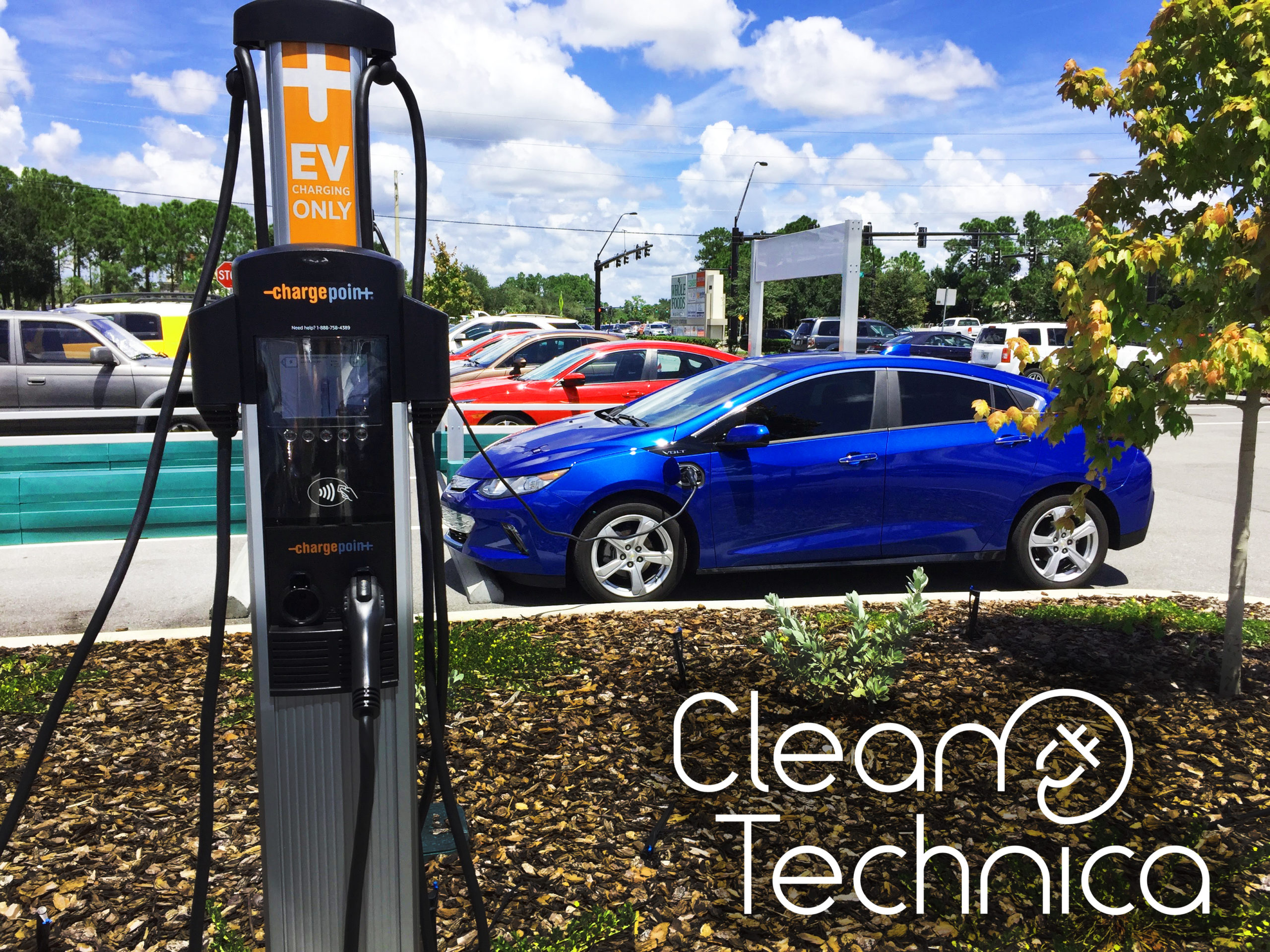GM To Re-Introduce Plug-In Hybrids. What Does That Mean, Exactly?


Sign up for daily news updates from CleanTechnica on email. Or follow us on Google News!
During a conference call with investors in January, General Motors CEO Mary Barra put a brave face on the fact that the company’s transition to electric vehicles is off to a rocky start. It has stopped making the Bolt — the least expensive EV in America — at precisely the same time as the demand for lower priced electric cars is at its highest. Its new Blazer EV got launched with so many software issues, it was literally undriveable. But not to worry, Barra said. GM was going to focus on building big, hulking gas hogs and ease back into the EV space with plug-in hybrids.
“We’re building on a foundation that our customers love,” Barra explained. The important internal combustion engine (ICE) sector of trucks and SUVs will continue to prop up the company until the full transition to EVs is at hand, she said. “We thought we’d be farther along” she told Bloomberg Television in an interview, adding that hybrids will be added to “key segments,” without specifying which models or how soon.
“We also have more than 100,000 reservations and orders for EV pickups that we expect to fulfill in 2024 and 2025. However, if demand conditions change, we’ll take advantage of our manufacturing flexibility in Spring Hill and Ramos to build more ICE models and fewer EVs. We can also mix between different EV products at Factory ZERO. Ultimately, we will follow the customer.” The environmental benefits of EVs will be compelling, she agreed, but EVs need to be deployed in strategic segments as the nation continues to build its charging infrastructure. Nonetheless, Barra was confident that calendar year 2024 is for EVs.
GM CFO Paul Jacobson acknowledged the sputtering trajectory of EV growth in his remarks but insisted that GM expects to overcome them. “We know the EV market is not going to grow linearly, and we are prepared to flex between ICE and EV production, given our unique manufacturing capabilities to balance inventory levels and to build customer demand. This will help support pricing and our continued incentive discipline.”
More Plug-In Hybrids Coming
All that “Don’t worry folks, we’ve got this” happy talk from the top echelons is all well and good, but the Detroit Free Press wants to know details. Which models will be plug-in hybrids? Just about the only vehicles GM sells today are SUVs and pickup trucks, all of them powered exclusively by internal combustion engines. Will it dust off the Voltec PHEV system from the Volt that has been sitting in the shelf for years?
Plug-in hyrids are not a panacea, the Free Press says. There’s no free lunch in engineering: A vehicle with a second energy source is more complicated and expensive than an ICE engine alone. That, and confidence in the Ultium batteries and electric motors GM had developed, led the automaker to announce its leap to EVs, despite the fact that it had pioneered PHEV technology more than a decade ago with the Chevrolet Volt. “I was always skeptical of going all EV with no fallback plan,” Cox Automotive executive analyst Michelle Krebs said. “The road to electrification is very rocky.”
Today, plug-in hybrids are a small player in the US even though sales were up by more than 50 percent in 2023. Even at that, at 250,000 vehicles sold, they accounted for just 1.8% of total vehicle sales: 251,000 units. By comparison, battery electric vehicles accounted for 7.4 percent of US sales with 1.03 million sold.
The Strong Plug-In Hybrid Alliance, which lobbies for plug-in hybrids that have more than token battery only range, argues the vehicles are very effective at reducing emissions and oil consumption while appealing to customers not ready to make the switch to electric power alone.
Plug-in hybrids are much more popular in China, where customers expect them to have significant battery only range. Late last year, the company introduced a PHEV version of the Chevy Equinox in China, which may be a hint of what The General has in mind for North America. According to GM Authority, that model has a 1.5 liter turbocharged 4 cylinder 170 hp (127 kW) engine combustion engine and a 188 hp (140 kW) electric motor. A lithium iron phosphate battery pack of unspecified capacity is included in the powertrain package. The 2017 Volt has an 18.4 kWh lithium ion battery, a 1.5 liter 4 cylinder engine (no turbocharger) and an electric motor rated at 150 hp (111 kW).
Throw in the turbo and a somewhat more powerful motor and it sounds like the powertrain in the new Equinox for China is a close cousin to the second generation Voltec powertrain used in the Volt. Which begs the question, why did GM mothball that powertrain instead of adding it to models like the Malibu and the Canyon midsize pickup truck? The answer, probably, is that GM did what it has always done — feature some decent engineering and styling that then gets vetoed by the bean counters more concerned with building shareholder value that building world class cars and trucks.
“Bringing PHEVs back to North America speaks to the company’s ability to be flexible and make changes on the path to zero emissions,” said S&P Global Mobility analyst Stephanie Brinley. “GM’s goal of offering a zero emissions vehicle fleet hasn’t changed. The global company has a massive toolbox; the decision to revisit plug-in hybrids in North America shows they will use the whole kit as needed to get where they want to go.”
GM called the Volt an “extended range electric vehicle,” but that’s indistinguishable from PHEV to anybody but an engineer, the Free Press says. But it lost any first mover advantage when it canceled a planned Volt SUV and eventually dropped the car, and the technology. Customers may see Chevy, Cadillac, Buick and GMC as latecomers compared with brands that have sold PHEVs all along, including Ford, Hyundai, Kia and Toyota.
One factor against plug-in hybrids is a recent Consumer Reports study that shows them having the worst reliability of any vehicles, with more than double the problems of conventional vehicles. The complication of having two separate power sources makes plug-in hybrids more susceptible to faults, said Jake Fisher, its director of automotive testing. That same report said that battery electric cars also were less reliable than conventional cars, probably because they don’t have over a century of prior experience to build on.
Which Models Will Offer Plug-In Hybrids?
GM hasn’t said when the first of its new PHEVs will debut in America or which models will offer the technology. The biggest impact on fuel use and emissions will come from deploying the technology on larger vehicles that GM sells in the US but not China — pickups and large SUVs. “One of the first PHEV models will likely be the next generation Chevrolet Silverado and GMC Sierra full size pickups, which are due out in late 2026,” said Sam Fiorani, of AutoForecast Solutions. “Needing to balance out the big V8s in the pickups and SUVs, GM is likely to target the hybrid and plug-in models from Ford, Toyota, and Ram.”
Ram is preparing its own PHEV pickup truck, which may actually make its way to market before GM can get its act together. SUVs ranging from the Chevrolet Equinox to Traverse and Buick Enclave should also be considered, Fiorani said.
The Free Press says, “GM’s initial plan to leap straight from internal combustion engines to all-electric power was a bold gamble, but it rolled snake eyes. Doubling down would have been foolish. Recalibrating with a technology GM’s proven it can deliver is the smart move.” That may be so, but there are lots of people who wonder why GM did not leverage its Voltec powertrain technology sooner.
The Takeaway
The big reason for a switch to plug-in hybrids, of course, is a lack of reliable charging infrastructure for battery electric cars today. But the Biden administration is making a major push to correct that situation. By 2025, it should no longer be an issue in many parts of America. Which means by the time GM is ready to roll out is next wave of plug-in hybrids, the charging network being built with federal funds should be ready to power any electric car that needs it and GM will be late to the party all over again. One would expect a major corporation with access to the latest and greatest market research would be able to make better business decisions than GM has done.
The problem is that GM has a huge manufacturing base that is 100% invested in making vehicles with internal combustion engines. It can’t just turn that off and build all electric cars without destroying its business model. Tesla and many Chinese competitors don’t have that problem, which gives them a huge advantage over legacy automakers.
It may be that the EV revolution is taking a bit of breather. People talk about the slope of the S curve for new technologies and maybe they are right. Or maybe Tesla and the others are moving too fast and about to crash into a brick wall labeled “reality.” Either way, the transition to electric cars is not a beauty contest; it is a vital part of the overall plan to slash emissions so greenhouse gas emissions are reduced.
Mary Barra’s statement that GM will follow the course charted by consumers is more than a little disingenuous. GM and its colleagues didn’t lift a finger to provide reliable charging networks for its electric car customers did. Instead, it sat on its hands and waited for someone else to do the heavy lifting.
That someone else, in most cases, was Tesla, which recognized early on that reliable fast charging was essential to the EV revolution. In addition, GM has a huge advertising budget and could easily move consumer opinion toward electric cars if it wanted to. The mania for big SUVs and pickup trucks is a direct result of advertising by the major auto companies.
Overall, the reaction to this latest news from GM here at CleanTechnica global headquarters is the sound of one hand clapping.
Have a tip for CleanTechnica? Want to advertise? Want to suggest a guest for our CleanTech Talk podcast? Contact us here.
Latest CleanTechnica TV Video
I don’t like paywalls. You don’t like paywalls. Who likes paywalls? Here at CleanTechnica, we implemented a limited paywall for a while, but it always felt wrong — and it was always tough to decide what we should put behind there. In theory, your most exclusive and best content goes behind a paywall. But then fewer people read it!! So, we’ve decided to completely nix paywalls here at CleanTechnica. But…
Thank you!
CleanTechnica uses affiliate links. See our policy here.
This post has been syndicated from a third-party source. View the original article here.




